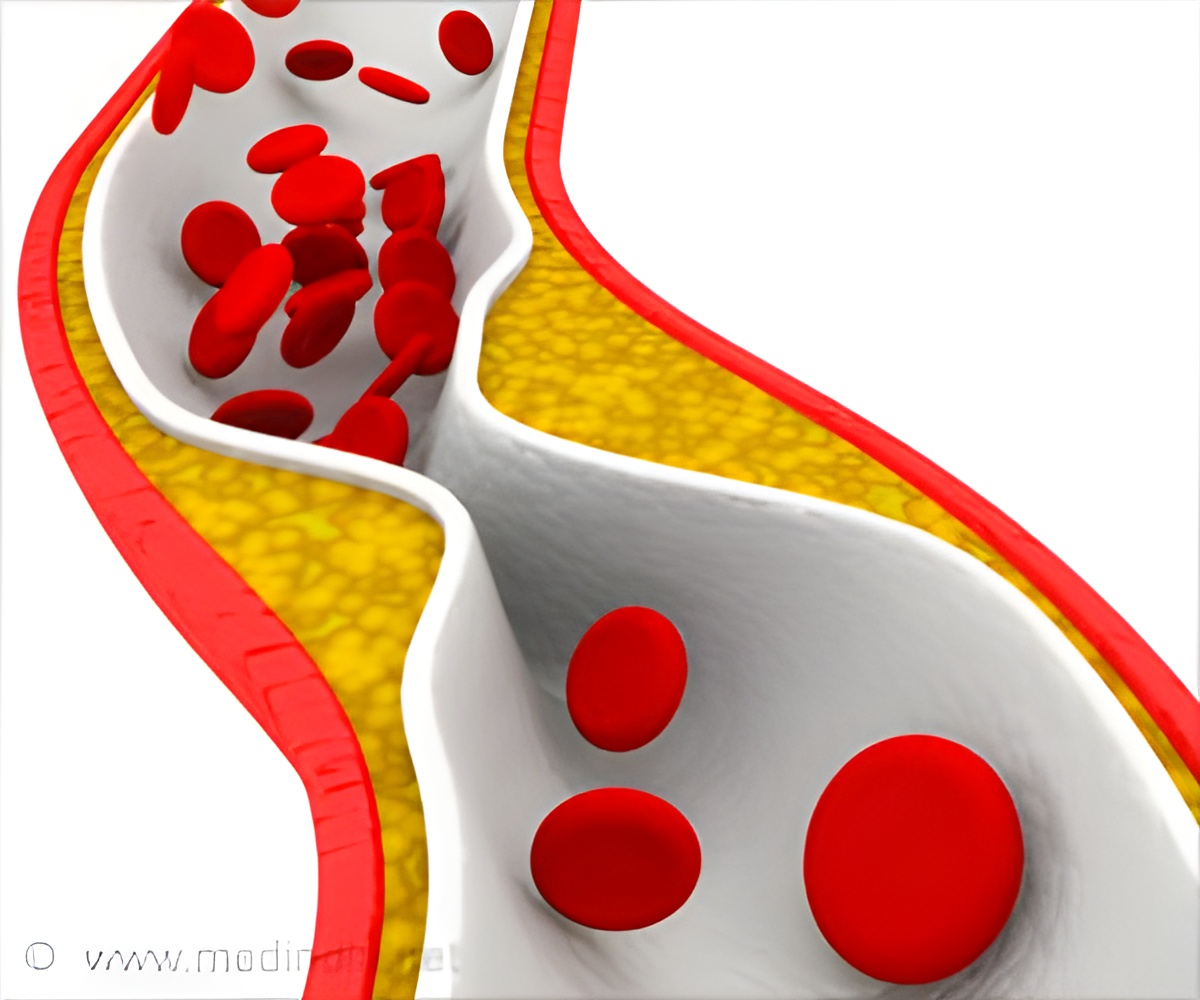Researchers have created a probe that glows when it detects an enzyme linked to blood clots and strokes.

‘Researchers designed a chemical probe that can detect an enzyme that accompanies intraplaque haemorrhages and instabilities.’
Read More..




Intraplaque haemorrhages (IPHs) can occur during atherosclerosis when portions of the plaque break away from the artery walls. They can form more vulnerable plaques and blood clots, restricting blood flow to the heart and the brain and potentially leading to chronic diseases or catastrophic events like strokes.Read More..
Detecting IPHs provide a warning system and allow early diagnosis of vascular conditions. The research team designed a chemical probe that can detect rises in levels of an enzyme that accompanies IPHs and even plaque instabilities that precede IPHs.
Study co-lead Professor Nicholas Long, from the Department of Chemistry at Imperial, said: "Progress in the field of early cardiovascular disease has been rather limited and slow-paced but this new probe, and others that we are developing, will go a long way to addressing this by providing real-time and easily measured responses to diagnostic enzymes."
Study co-lead Dr Joe Boyle, from the National Heart and Lung Institute, added: "Ultimately, these probes could provide the basis for diagnostic tests at the GP, ambulances or in hospitals for quick identification of cardiovascular diseases.
The probe can provide real-time analysis of biological processes involved in vascular disease, providing new insights and potentially new ways to track the progress of chronic disease."
Advertisement
It is made of two components that can host fluorescent (glowing) molecules - one 'donor' that transfers the fluorescent molecules to the 'acceptor' component. When the probe comes into contact with HO-1, the bond between the two components is severed, leading to the build-up of the fluorescent molecules in the donor component.
Advertisement
Professor James Leiper, associate medical director at the BHF, said: "Current methods to detect IPH rely on hospital-based imaging techniques that are both time consuming and expensive. The current technology aims to produce a fast and sensitive diagnostic test that can be used at the time that a patient first presents with symptoms to allow early detection of IPH. Use of such a test would allow for more rapid treatment and improved outcomes for patients suffering from IPH."
The team are now extending their studies to mammal and human cells. They have recently patented their probe and have received funding from the British Heart Foundation to make a new generation of probes for other cardiovascular and neurodegenerative diseases, and to carry out more in-depth biological investigations of the underlying mechanisms.
Source-Medindia












